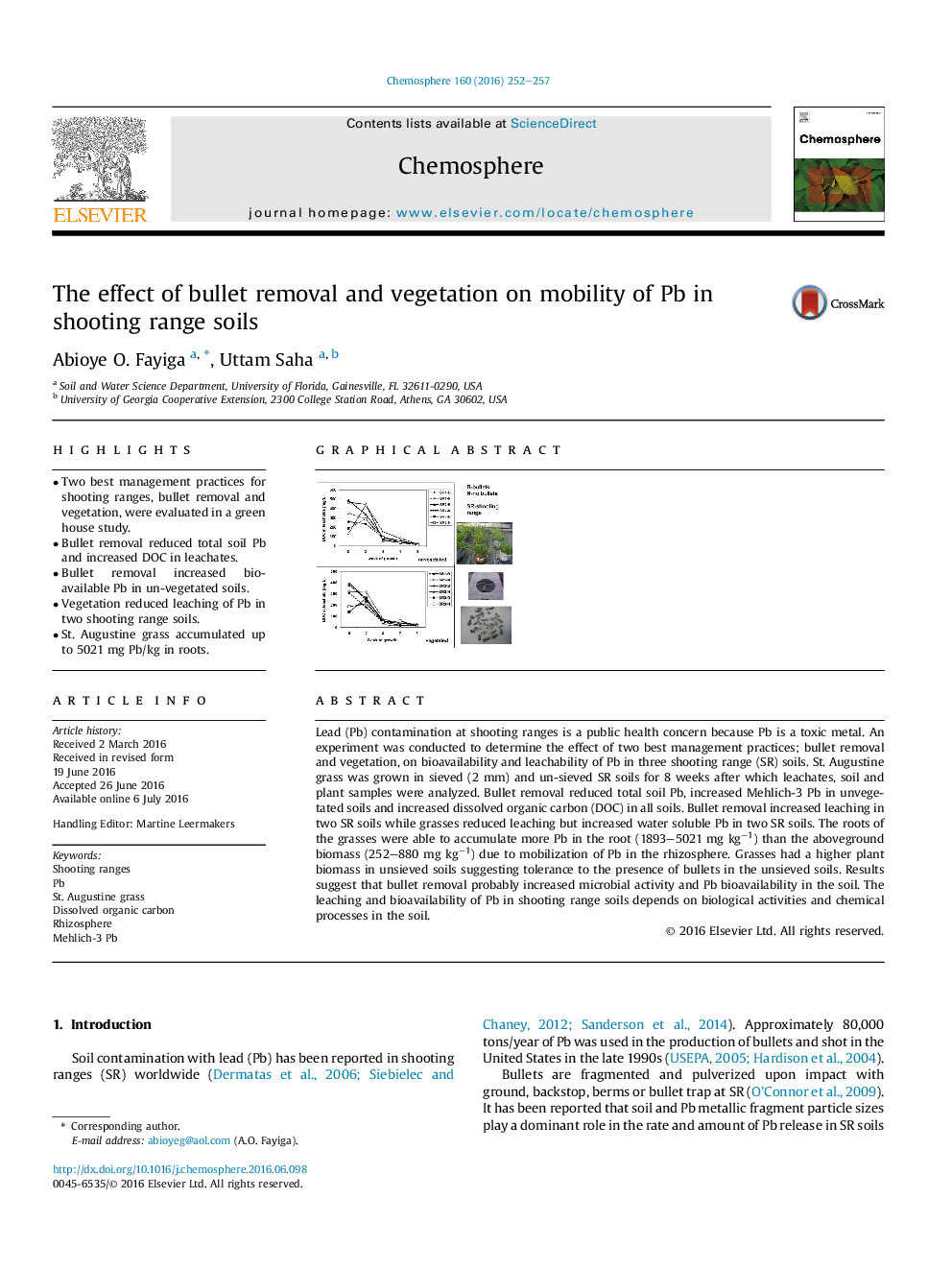| Article ID | Journal | Published Year | Pages | File Type |
|---|---|---|---|---|
| 4407371 | Chemosphere | 2016 | 6 Pages |
•Two best management practices for shooting ranges, bullet removal and vegetation, were evaluated in a green house study.•Bullet removal reduced total soil Pb and increased DOC in leachates.•Bullet removal increased bio-available Pb in un-vegetated soils.•Vegetation reduced leaching of Pb in two shooting range soils.•St. Augustine grass accumulated up to 5021 mg Pb/kg in roots.
Lead (Pb) contamination at shooting ranges is a public health concern because Pb is a toxic metal. An experiment was conducted to determine the effect of two best management practices; bullet removal and vegetation, on bioavailability and leachability of Pb in three shooting range (SR) soils. St. Augustine grass was grown in sieved (2 mm) and un-sieved SR soils for 8 weeks after which leachates, soil and plant samples were analyzed. Bullet removal reduced total soil Pb, increased Mehlich-3 Pb in unvegetated soils and increased dissolved organic carbon (DOC) in all soils. Bullet removal increased leaching in two SR soils while grasses reduced leaching but increased water soluble Pb in two SR soils. The roots of the grasses were able to accumulate more Pb in the root (1893–5021 mg kg−1) than the aboveground biomass (252–880 mg kg−1) due to mobilization of Pb in the rhizosphere. Grasses had a higher plant biomass in unsieved soils suggesting tolerance to the presence of bullets in the unsieved soils. Results suggest that bullet removal probably increased microbial activity and Pb bioavailability in the soil. The leaching and bioavailability of Pb in shooting range soils depends on biological activities and chemical processes in the soil.
Graphical abstractFigure optionsDownload full-size imageDownload as PowerPoint slide
